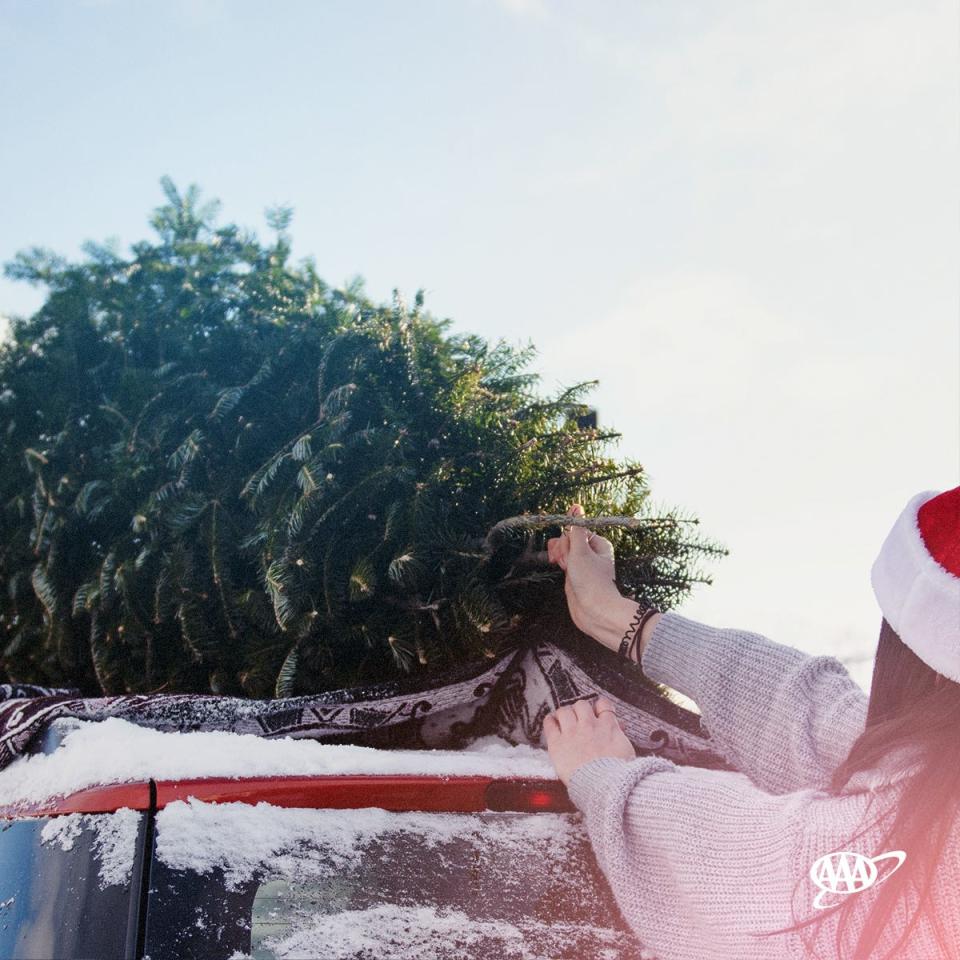6 tips to get your Christmas tree home safely without damaging your ride
Your Christmas tree was carefully selected, whether you cut it at a tree farm or pick your favorite pre-cut tree at a lot. But now you need to transport your tree home.
While finding the perfect tree may be tricky, transporting the tree home can also pose a challenge.
According to AAA, 44% of Americans planning to purchase a real Christmas tree transport the tree using unsafe methods, such as tying the tree to the roof of their vehicle without using a roof rack or placing the tree in the bed of a pickup.
If not properly secured, a tree can cause vehicle damage including scratched paint, torn door seals or distorted window frames. Or the tree could fly off or out of the vehicle and become a danger to other drivers.
According to AAA, 16% of Americans who plan to buy and transport a Christmas tree have previously experienced a tree falling off or out of their vehicle while transporting the tree.
6 tips when transporting your Christmas tree

AAA offered the following transport tips:
Plan ahead – Before leaving to buy a tree, make sure to bring strong rope or ratchet straps, an old blanket, gloves and the right vehicle. One with a roof rack is ideal, but a pickup truck, SUV, van or minivan would also work.
Wrap and cover the tree – Ask employees at the tree lot or farm to wrap your newly purchased tree in netting before loading it.
Trunk first – Place the tree on the roof rack or in the bed of the truck with the trunk facing the front of the car. If your vehicle does not have a roof rack and is large enough – place the tree inside.
Secure the tree – Tie down the tree at its bottom, center and top using strong rope or nylon ratchet straps. Use fixed vehicle tie-down points and loop the rope or strap around the tree trunk above a branch to prevent any side-to-side or front-to-rear movement. Tie down any loose branches.
Tug test – Once secured, give the tree several strong tugs from various angles to make sure it will not come loose.
Drive slowly – Drive slowly and take back roads if possible. Higher speeds can create significant airflow that can damage your tree or challenge even the best tie-down method.
This article originally appeared on Rochester Democrat and Chronicle: How to get your Christmas tree home safely without damaging your ride

